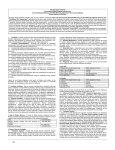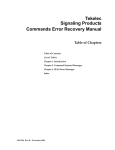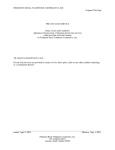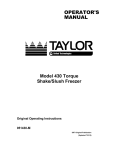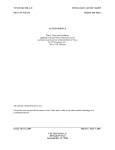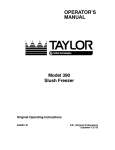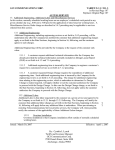Download RAO - Telecom Routing Administration
Transcript
Issue 15 July 2015 iconectiv Revenue Accounting Office (RAO) Code Guidelines RAO Code Guidelines Issue 15 July 2015 Table of Contents 1. 2. 3. Executive Summary................................................................................................................................ 3 Introduction ............................................................................................................................................ 4 Uses of RAO Codes and Associated Call Scenarios .............................................................................. 7 3.1 Alternately Billed Calls - (Hosted) ................................................................................................. 7 3.2 Access Billing - (Hosted)................................................................................................................ 7 3.3 Special Calling Cards – (Hosted).................................................................................................... 7 4. Types of RAO Codes .............................................................................................................................. 8 4.1 Non-Hosted RAO Code .................................................................................................................. 8 4.2 Full Status RAO Code .................................................................................................................... 8 4.3 Nationwide RAO Code ................................................................................................................... 8 4.4 Shared RAO Code .......................................................................................................................... 9 5. CMDS Transmission Requirements and Responsibilities .....................................................................10 5.1 CMDS Direct Participants .............................................................................................................10 5.2 CMDS Indirect Participants ...........................................................................................................10 5.3 Changing CMDS Hosts .................................................................................................................10 6. RAO Code Assignment .........................................................................................................................11 7. Changing RAO Code Type....................................................................................................................13 8. CMDS Host Responsibilities .................................................................................................................14 9. Incorporation of RAO Code Information in CMDS and BIRRDS ........................................................15 10. Contact Information ...........................................................................................................................16 11. Document Reference .........................................................................................................................17 12. Alternate Billing Call Message Exchange and Revenue Settlement .................................................18 13. Access Usage Message Exchange .....................................................................................................19 14. Database Query Message Billing .......................................................................................................22 15. Special Calling Cards (Hosted) .........................................................................................................23 16. RAO Procedures and Company Name Change, Business Termination, Sale or Merger ................24 16.1 Companies Seeking Name Change ................................................................................................24 16.2 Non-Hosted Companies Experiencing Termination or Ownership Change ..................................24 16.3 Hosted Companies Experiencing Termination or Ownership Change ..........................................24 17. Obtaining a Non-Hosted RAO Code .................................................................................................25 18. iconectiv Non-Hosted RAO Code Application – Form A .................................................................26 19. iconectiv Non-Hosted RAO Code Agreement – Form B ..................................................................27 20. Changing Miscellaneous RAO Fields ...............................................................................................28 21. iconectiv RAO Change Form Application – Form C ........................................................................29 22. Glossary .............................................................................................................................................30 2 RAO Code Guidelines Issue 15 July 2015 1. Executive Summary RAO (Revenue Accounting Office) codes are three-position alphanumeric codes, assigned by Telcordia Technologies, Inc. d/b/a iconectiv (iconectiv) that are used in the telecommunications industry for exchanging messages between companies1. This document explains why they are used, how they are used, the various types of RAO codes that are available, and how the codes are assigned. 1 The exchange of records between CMDS Direct Participants and CMDS Indirect Participants are subject to local negotiations. 3 RAO Code Guidelines Issue 15 July 2015 2. Introduction A Revenue Accounting Office (RAO) code is a three-position alphanumeric code utilized in the telecommunications industry for the following four functions: 1. 2. 3. 4. Message routing Intercompany Settlements NPANXX activation (added to rating table on the Terminating Point Master (TPM) Special Calling Card Number Note: Individual companies may have other locally defined uses for RAO codes. RAO codes are required for all Exchange Carriers because it is an integral part of routing, rating and revenue settlements systems and are necessary for the proper handling of messages and revenues distributed throughout the telecommunications industry. Every Exchange Carrier (EC) must have an RAO code. RAO Codes are both non-hosted and hosted codes that can be assigned dependent on the Exchange Carrier’s requirements: 1. Non-hosted RAO codes are for companies that will not want to exchange messages over CMDS 2. These codes cannot be used to route messages over CMDS and are not recommended for any company that intends to exchange message data outside of a local agreement. Only one code is needed even when a company has multiple NPA’s nationally. 2. There are three types of Hosted RAO Codes Full Status RAO code implies that the Exchange Carrier assigned the RAO is within a specific region or territory, defined by a BOC geographic operating boundary as established by Divestiture in 1984. This code is obtained through a CMDS Direct Participant. Nationwide RAO code companies usually have operations that span across more than one BOC’s geographical area. They may also currently operate in only one BOC’s geographical area, but have plans to expand into multiple areas. This code is obtained through a CMDS Direct Participant. Shared RAO code companies operate within a specific region or territory and have no desire or need to have their own RAO code. To share an RAO code, a company must negotiate an agreement with the CMDS Direct Participant to which iconectiv originally assigned the RAO code (RAO code assignee). An RAO code cannot be shared without the agreement of the code assignee, and only Full Status Codes can be shared. It had been requested by Alliance for Telecommunications Industry Solutions (ATIS), Order and Billing Forum (OBF) Message Processing Committee (MSG) that all wireless carriers are encouraged to apply for a valid RAO Code. The OBF is an ATIS forum where customers and providers in the telecommunications industry identify, discuss and resolve issues which affect ordering, billing, provisioning and intercompany exchange of information, e.g., access billing and end-user billing. 2 CMDS (Centralized Message Distribution System) is the Telcordia Technologies administered national electronic transmission system, based in St. Louis, Missouri, used to exchange EMI-formatted data among CMDS Direct Participants. CMDS Direct Participants are those companies that are linked directly to CMDS for sending and/or receiving messages. Any company can be a CMDS Direct Participant provided it has negotiated a contractual agreement with iconectiv. However, other companies may become CMDS Indirect Participants by using CMDS through a CMDS Direct Participant that is serving as a host agent. 4 RAO Code Guidelines Issue 15 July 2015 The Message Processing Committee, which addresses record exchange issues, opened and resolved OBF/MSG Issue 2217, Wireless Use of Default (999) RAO Codes. The resolution of this issue, reached by consensus was: That all wireless carriers can obtain an RAO assignment by making a request to the iconectiv RAO Code Administrator. OBF recommends that all carriers obtain an RAO and that the use of a default RAO 999 code is no longer acceptable and will be phased out by June 2002. The Telecom Routing Administration (TRA) has implemented an edit in its database system that prevents carriers from making new data entries using RAO Code of 999 effective June, 2002. This means that no new RAO 999 entries will appear in the LERG Routing Guide and TPM Data Source after this edit is created. Traditionally, RAO Codes have been used for Alternate Billing Call Message Exchange, Access Usage Message Exchange, Database Query Message Billing and Special Calling Cards. Although wireless carriers may not be using the above, as the industry grows this will become a critical issue. During the past few years, the RAO code evolved into a standardized tool for carrier billing operations identification for both internal processing and carrier interaction. Why should wireless companies obtain an RAO Code and what are the benefits? The main reason for obtaining the RAO Code is revenue assurance – to speed up the process for collecting revenue from other carriers and help insure your company is collecting what it should. The benefits are: Enables carriers to effectively perform Alternate Billing Services and allows marketing flexibility and faster response when planning these services. Catches mis-coded messages wireline carriers are seeing leak through the billing and collections process. (Revenue opportunities are being lost!) Common naming convention for interconnection to other carriers with less translation (fewer points for errors to occur.) Many carriers require an RAO Code for meet-point billing contracts. May facilitate billing operations for wireless-wireline portability (The FCC is planning for the wireless – wireline portability to be in effect November 2003) Used by wireline carriers to resolve access billing issues. Wireline carriers cannot route messages to wireless carriers without special arrangements. (This costs more for both sides.) To obtain an RAO code, each company must have a valid Company Code (OCN) assigned by the National Exchange Carrier Association (NECA). All RAO codes are administered by the iconectiv RAO Administrator (732-699-5082). They may be assigned to a company directly by iconectiv or through a CMDS Direct Participant depending on the RAO type requested. Note: The exchange of records between CMDS Direct Participants and CMDS Indirect Participant companies is subject to local negotiations. Message Routing Message routing involves sending recorded call information from the call originating company to the call billing company. Similar to addresses, RAO codes are used to identify and route messages between the call originating (From RAO) and call billing (Send To/Billing RAO) companies. RAO codes have multiple uses in the message routing processes. These include, but are not limited to, the following: 5 RAO Code Guidelines Issue 15 July 2015 1) Route messages/packs from originating to billing companies. 2) Route return unbillable messages from the intended billing company back to the originating company 3) Route Access and/or Meet Point Billing messages from the recording company to the billing company 4) Route reports To route a message to the billing company, the message must first be formatted according to the Exchange Message Interface (EMI) document, which is the nationally accepted industry guideline for message exchange. The billing messages are then arranged in groups (packs) of common RAO codes and are sent by the originating company to the intended billing company. Intercompany Settlements Intercompany settlements (ICS) involve the revenue settlements between the Earning (Originating) Company, identified by the From RAO, and the Billing Company, identified by the Billing RAO. NPANXX Activation An RAO entry is required in Part 2 of the Central Office (CO) Code (NXX) Assignment Request form and is necessary so that NPANXX information can be added to national rating tables, such as the Operating Telephone Company Numbering Plan Guide (OTCNPG), the TPM Data Source, and the RAO Code Directory. The database is updated by the company (OCN) who owns the NPANXX or a company (AOCN) designated by the OCN to do the updating for them. Special Calling Card Number The RAO is used as the first three digits of the Special Calling Card number although not all RAO’s may be used for Special Calling Cards. See Sections 3.3 and 15 for details on Special Calling Card Numbers. 6 RAO Code Guidelines Issue 15 July 2015 3. Uses of RAO Codes and Associated Call Scenarios 3.1 Alternately Billed Calls - (Hosted) The RAO code is a key component of all Exchange Carrier message distribution and settlements processes. If alternate billing (calling card, third number or collect) is offered by a company as a service to its customers, or if alternately billed calls are allowed to originate from a company’s end user’s facilities, an RAO code is necessary to route messages from the recording location to the billing location. The settlement of revenues associated with alternately billed calls is also dependent on the RAO Code for calculation of earned and billed revenues. See Section 12 for alternately billed call scenarios. 3.2 Access Billing - (Hosted) RAO Codes are necessary for the distribution of Carrier Access Billing System (CABS) records and database query records. See Section 13 for access billing call scenarios and Section 14 for database query call scenarios. 3.3 Special Calling Cards – (Hosted) If Special Calling Cards are offered by a company as a service to its customers, a numeric RAO code is absolutely required because it is part of the calling card dialing sequence. See Section 15 for the Special Calling Card format. 7 RAO Code Guidelines Issue 15 July 2015 4. Types of RAO Codes 4.1 Non-Hosted RAO Code A Non-Hosted RAO Code, as referenced in Section 2 of this document, is an RAO code that has been assigned directly by iconectiv to a company and may not be sent over CMDS. Non-Hosted RAO codes are frequently obtained by new companies, on a temporary basis, as a part of the process of setting up telephone operations. Since an RAO code is necessary to obtain NPANXX codes, new companies may desire the activation of an RAO prior to setting up a CMDS Hosting agreement. This can be accomplished by contacting iconectiv directly and executing the attached iconectiv Non-Hosted RAO Code Agreement (see Section 18). Only one code is required even when the company has multiple NPA’s in multiple states. Non-Hosted RAO codes can usually be obtained quickly with minimal negotiation and may be preferable when NPANXX codes are being obtained, but actual telephone operations will not begin until sometime in the future. The RAO assignment charge is $200.00 for each RAO code issued (see Section 17). If you need your code in less than 10 days, you can expedite it for $300.00 – turn around will be within 2 working days. It is critical to note that Non-Hosted RAO codes are not eligible for use over CMDS and are not intended for any company with a need to send messages over CMDS. Non-Hosted RAO codes, however, may be converted to Hosted Status at any time by executing a CMDS Hosting agreement with a CMDS Direct Participant or by becoming a CMDS Direct Participant. 4.2 Full Status RAO Code A Full Status RAO Code, as defined in Section 2 of this document, is an RAO code that has been assigned to a company that is operating solely within one Bell Operating Company’s (BOC’s) region or territory. This type of code requires that the company requesting the RAO code, either negotiate 1) an agreement with iconectiv to become a CMDS Direct Participant or 2) an agreement with a CMDS Direct Participant who will act as a hosting agent. 4.3 Nationwide RAO Code A Nationwide RAO Code, as defined in Section 2 of this document, is an RAO code that has been assigned to a company that has operations in more than one BOC’s region or territory or has plans to expand into multiple BOC regions and is requesting one RAO code to apply to all of its operations. As with the Full Status RAO code, the company requesting the Nationwide RAO code must negotiate an agreement regarding CMDS processing and related settlement systems with either iconectiv or a CMDS Direct Participant. These codes are obtained through a CMDS Direct Participant. Nationwide RAO Codes may not be shared. 8 RAO Code Guidelines Issue 15 July 2015 4.4 Shared RAO Code A Shared RAO Code, as referenced in Section 2 of this document, is an RAO code that has been assigned to a company which is operating within a specific region or territory. Companies that wish to share the RAO code of another company MUST negotiate an RAO-sharing agreement with the CMDS Direct Participant RAO code assignee. RAO codes can never be shared in the absence of such an agreement. All requirements and responsibilities of a company using a shared RAO code are negotiated locally with the RAO code owner as a part of the sharing agreement. Shared RAO codes that are being used in one company’s region cannot be used in another company’s region without specific consent from the RAO code assignee. Only Full Status codes are available for sharing. Non-Hosted RAO codes and Nationwide RAO codes may not be shared. Shared RAO codes must be able to be used over CMDS. 9 RAO Code Guidelines Issue 15 July 2015 5. CMDS Transmission Requirements and Responsibilities 5.1 CMDS Direct Participants CMDS Direct Participants must adhere to the following CMDS transmission requirements and responsibilities: The company is responsible for formatting records in accordance with the Exchange Message Interface (EMI) guidelines which can be obtained from the Alliance for Telecommunications Industry Solutions (ATIS) as referred to in Section 11 of this document. The company is in compliance with requirements in its use of CMDS, the Calling Card and Third Number Settlement System (CATS)3; and the Non-Intercompany Settlement System (NICS)4, depending on local agreements, for the exchange of messages/revenues. Standard edits are required for all records transmitted via CMDS. These edits must be performed according to the CMDS System Specifications available from iconectiv as referred to in Section 11 of this document. These edits must be performed to insure the integrity of the data transmitted over CMDS. The company must have, or develop the capability to retrieve, to make corrections and to re-enter packs that were rejected by CMDS. The originating company is responsible for notifying all billing companies, through iconectiv, when incorrectly formatted, incorrectly rated, or duplicate messages are forwarded to CMDS. The originating company, or its rating agent, is responsible for the investigation and resolution of pre-billing errors. The billing Exchange Carrier (EC) may receive messages periodically from other EC’s that cannot be billed because of incorrect or missing information in the EMI record. These errors need to be returned to the originating company to be investigated, resolved and the record corrected so the records become billable. Messages that are sent by the originating company which are correctly formatted and contain billing numbers which have been validated using a Billing Validation Database (e.g., LIDB), but subsequently cannot be collected from the customer by the billing company, should not be returned to the originating company. These records are the responsibility of the billing company. The exchanging of messages with a company owning a full status or nationwide RAO code should be a daily operation. It is important that records be processed on a daily basis to insure the fastest possible cash flow, and to avoid volume fluctuations and scheduling problems. 5.2 CMDS Indirect Participants The expectation is that the CMDS Indirect Participant Companies will follow similar requirements subject to local negotiations. 5.3 Changing CMDS Hosts Whenever an indirect participant changes its CMDS host all invoice tables for the RAO should revert to “01”. Also, the preferred effective date for the hosts change should be the first of the month. 3 CATS is an EC to EC intercompany settlement system. Additional information is available to all CMDS Direct Participants and their hosted companies and may be obtained by contacting iconectiv as outlined in Section 11 of this document. 4 NICS is an EC to EC intercompany settlement system. Additional information is available to all CMDS Direct Participants and their hosted companies and may be obtained by contacting iconectiv as outlined in Section 11 of this document. 10 RAO Code Guidelines Issue 15 July 2015 6. RAO Code Assignment iconectiv is responsible for assigning all new RAO codes, including all types listed in Section 4 above. All EC/wireless companies that have messages to exchange over CMDS with other EC/wireless companies must have a CMDS-capable RAO code. EC/wireless companies that require NPANXX code activation, but have no need to exchange messages with other EC/wireless companies using CMDS may obtain a NonHosted RAO code. Only those telecommunications companies that have a valid Company Code (OCN) which has been assigned by NECA are eligible to receive an RAO code. CMDS Direct Participant companies are responsible for requesting new RAO codes, both for themselves and any companies that they will be hosting. Full Status and Nationwide RAO codes were designed to be used for routing messages from one EC to another. Therefore, the request for these types of RAO codes must go through a CMDS Direct Participant. A CMDS Direct Participant who is obtaining an RAO code (either Full Status or Nationwide) for itself should contact the iconectiv RAO Administrator directly to obtain the RAO code. This assignment requires a written request to be received by the RAO Administrator at least 60 calendar days prior to the requested RAO code activation date. The following information must be provided for hosted and non-hosted codes via an application form (Section 17). On receipt of the completed application, the RAO Administrator will assign an RAO code within ten business days: Company Name and Address Company Contact Name and Telephone Number Company Code (OCN) as assigned by NECA (NECA letter assigning the company OCN may be required if the company name and OCN cannot be verified.) NPA that will be associated with the new RAO State associated with above NPA Type of RAO code requested (Full Status, Nationwide or Non-Hosted) Requested effective date of RAO code E-mail address, if available, and fax number of code requester Non-Hosted assignment fee information is provided in Section 16. Hosted Code requests additionally require the following: Host’s Company Code as assigned by NECA The 2 or 3-digit Remote-ID where CMDS data and reports are to be sent A Non-CMDS Direct Participant requiring a CMDS-capable RAO code (Full Status or Nationwide) must contact a CMDS Direct Participant company (See Contact Information in Section 10 of this document). A written contract and/or agreement must be negotiated between the requesting company and the CMDS Direct Participant prior to requesting the new RAO code from iconectiv. Once this contract/agreement has been reached, the CMDS Direct Participant, on behalf of the requesting company, is responsible for obtaining the RAO code from the iconectiv RAO Administrator. A written request to the RAO Administrator must be received by iconectiv at least 60 calendar days prior to the requested RAO code effective date and must contain all of the information listed above. RAO codes obtained in this manner will be assigned to the requesting company (CMDS Indirect Participant). Should the company decide to change from one CMDS Direct Participant hosting company to another CMDS Direct Participant hosting company, there would be no need to change its RAO code. However, all involved companies, including iconectiv, must be notified. 11 RAO Code Guidelines Issue 15 July 2015 Any telecommunications company that does not intend to use the CMDS network for message exchange with other ECs may request and obtain an RAO code for use in NPANXX Code activation. This type of RAO code is a Non-Hosted RAO code and is defined in Section 4 of this document. To obtain a Non-Hosted RAO code, a company must complete the iconectiv Non-Hosted RAO Code Agreement and Application as instructed in Section 16 and provide to the iconectiv’s RAO Administrator (Contact information is listed in Section 10). Once received by the RAO Administrator, the requested RAO code will be assigned within ten working days. Should the company holding a Non-Hosted RAO code decide that CMDS capability is necessary for the exchange of messages with other EC’s, the Non-Hosted RAO code can be converted into a Full Status or Nationwide RAO code with full CMDS capabilities. This is achieved either by negotiation of a CMDS Direct Participant Agreement with iconectiv or by negotiation of a CMDS Hosting arrangement with any CMDS Direct Participant. In these situations, it is not necessary to change the RAO code that has been previously assigned. However, it is necessary to change the RAO code status from a Non-Hosted RAO code to CMDS hosted status (either Full Status or Nationwide). To do so, written notification from the hosting CMDS Direct Participant must be received by the iconectiv RAO Administrator at least 60 calendar days prior to the requested effective date of the change in status. This written request must contain the affected RAO code and all of the information required for the assignment of a new RAO code as listed previously in this section. All RAO codes assigned by iconectiv will be alphanumeric RAO codes unless the EC requires a numeric RAO code assignment in order to issue Special (non-line based) Calling Cards (those in the format RAO0/1XX-XXXX). Before a company requests a numeric RAO code in conjunction with a Special Calling Card assignment, it should ensure that, if it already has a numeric RAO assigned to it, all vacant Special Calling Card numbers, or soon to be vacant numbers, have been used. The requesting company should be aware that previously issued Special Calling Cards may need to be re-issued based on the new RAO code. This reissuance is entirely the responsibility of the requesting company. 12 RAO Code Guidelines Issue 15 July 2015 7. Changing RAO Code Type Changing from a Shared RAO Code to a Full Status or Nationwide RAO Code: When a company shares the RAO code of another company, it may become necessary based on business needs for that company to obtain a Full Status or Nationwide RAO code. In this case, the RAO code owner should be notified of the intent to terminate the sharing agreement. The company will then need to either negotiate with iconectiv to become a CMDS Direct Participant or with a CMDS Direct Participant to become its hosting agent. Once these agreements have been reached, the process to request and obtain the Full Status or Nationwide RAO code, and associate it with all applicable NPANXX’s, is the same as that outlined in Sections 4 and 6 of this document. Changing from a Full Status RAO Code to a Nationwide RAO Code: Companies that have traditionally operated in only one BOC’s geographical area using a Full Status RAO code may decide to convert that RAO code to a Nationwide RAO code and use it in multiple BOC geographical areas. If the company is using a CMDS host, the implementation date for this change is locally negotiated and must allow for notification to its CMDS Direct Participant host, in writing, at least 60 calendar days prior to the effective date of the requested change. The CMDS Direct Participant is then responsible for notifying the RAO Administrator in writing. If the Full Status RAO company is not using a CMDS host, then it must directly notify iconectiv, in writing, 60 calendar days prior to the effective date of the requested change. All NPAs associated with the affected RAO code must be included in the written notification to the RAO Administrator. The RAO Administrator will notify the industry of the change in status of the affected RAO code. The Administrative Code Owner, who is responsible for the Business Integrated Routing and Rating Database System (BIRRDS) updates, will need to update the applicable NPANXXs in the BIRRDS database as outlined in Section 9 of this document. 13 RAO Code Guidelines Issue 15 July 2015 8. CMDS Host Responsibilities Each hosting company is responsible for the following: Requesting new RAO codes for each hosted company if necessary. Establishing record exchange procedures directly with all of its hosted companies. Ensuring that messages have met all CMDS, CATS and/or NICS specifications. 14 RAO Code Guidelines Issue 15 July 2015 9. Incorporation of RAO Code Information in CMDS and BIRRDS The iconectiv RAO Administrator is responsible for coordinating the entry of all newly assigned RAO codes into CMDS as well as the iconectiv Business Integrated Routing and Rating Database System (BIRRDS). This activity must take place in sufficient time to ensure the publication of the new RAO information in the BIRRDS products at least one month in advance of the introduction of the RAO code. The following matrix can be used as an example: Activity Type Effective Date of Activity New RAO Code Nov 15 – Dec 14 Assignment form must be received before first Thursday of Aug Issue in which activity is published Sept 15 Effective with 3rd Quarter 1999 Business Rating Input Database System (BRIDS) products, and continuing in the new 2001 BIRRDS products, an RAO Code Type Indicator is associated with each RAO code as follows: 1. 2. 3. Non-hosted (No CMDS) Nationwide (CMDS) Full Status (CMDS) If the RAO is a hosted type code (Nationwide or Full Status), the Company Code/OCN of the host company is also specified. It is the responsibility of the iconectiv RAO Administrator to provide for the population of this indicator in BIRRDS. In addition to initializing the new RAO code data in CMDS and BIRRDS, it is also necessary to associate the new RAO code with its NPANXXs. These additional updates are submitted via BIRRDS, an on-line update system. It is the responsibility of the company to which the new RAO code has been assigned, or its designate, to initiate the on-line updates to BIRRDS. Subsequent changes to the NPANXX/RAO code relationship should follow the same guidelines. These updates are performed by a company identified by an Administrative Operating Company Number (AOCN). A company may be its own AOCN, or it may have its BIRRDS data managed by a third-party AOCN. For further information, contact the Telecom Routing Administration Hotline 732-699-6700. 15 RAO Code Guidelines Issue 15 July 2015 10. Contact Information iconectiv RAO Administrator: Ronald Seigle Room RRC-1G305 One 444 Hoes Lane Piscataway, NJ 08854-4104 Phone: 732-699-5082 Fax: 732-336-6999 E-mail: [email protected] CMDS Direct Participant Hosting Contacts: BellSouth: (Will host if doing business in their territory) Rosalind Hood 600 N. 19th Street, 8th Floor Birmingham, AL 35203 Phone: 205 321-6760 Fax: 205 321-3014 E-mail: [email protected] CenturyLink: Kathy Pearce 1314 Douglas-On-The-Mall 14th Floor Omaha, NE 68102 Phone: 402 422-2654 Fax: 402 422-4128 E-mail: [email protected] AT&T Services, Inc.: AT&T-SNET: Michael Papp 530 Preston Avenue Meriden, CT 06450 Phone: 203 634-5255 Fax: 203 634-9331 E-mail: [email protected] 16 RAO Code Guidelines Issue 15 July 2015 11. Document Reference Title Descriptive Title Number Provider CMDS System Specifications CMDS User Guide BR 190-402-215 iconectiv or CMDS host5 BIRRDS Rating Administrative Guide Business Integrated Routing and Rating Database System – Rating Administrative Guide N/A iconectiv or CMDS host6 BIRRDS Specifications User Manual iconectiv Business Integrated Routing and Rating Database System User Manual N/A Telecom Routing Administration (TRA) CATS Calling Card and Third Number Settlement System BR 981-200-110 iconectiv or CMDS host7 NICS Non-Intercompany Settlement System BR 190-402-218 iconectiv or CMDS host8 EMI Exchange Message Interface N/A ATIS (202-434-8827) MECAB Multiple Exchange Carrier Access Billing N/A ATIS (202-434-8827) 5 The CMDS System Specifications are available only to a CMDS Direct Participant through iconectiv or to a CMDS hosted company through its CMDS host. 6 BIRRDS Specifications are available only to a CMDS Direct Participant through iconectiv or to a CMDS hosted company through its CMDS host. 7 CATS is available only to a CMDS Direct Participant through iconectiv or to a CMDS hosted company through its CMDS host. 8 NICS is available only to a CMDS Direct Participant through iconectiv or to a CMDS hosted company through its CMDS host 17 RAO Code Guidelines Issue 15 July 2015 12. Alternate Billing Call Message Exchange and Revenue Settlement Alternate Billing of IntraLATA and Local Calls: Call Scenario 1: Call originates and bills in different BOC territories 9 Note: Revenue settlements are subject to local negotiations with the CMDS host. For example: An intraLATA call originates from Company A in Nevada and is third number billed to Company B in Maryland. The message is recorded and rated by Company A and is formatted into an EMI record with a From RAO = Company A’s RAO code and a Billing RAO = Company B’s RAO code. The message is sent by Company A (either directly through CMDS or through their CMDS host company) to Company B. Company B bills the message to the end user. Company B keeps a billing and collection (B&C) fee. Company B returns the revenue less the B&C fee to Company A. Call Scenario 2: Call originates and bills in the same BOC territory Note: Revenue settlements are subject to local negotiations with the CMDS host. For example: Company B’s customer uses a telephone owned by Company A in Georgia and places an intraLATA call billed to his home phone which is served by Company B, also in Georgia. The message is recorded and rated by Company A, formatted into an EMI record with the From RAO = Company A’s RAO code and the Billing RAO = Company B’s RAO code. The message is sent by Company A (either directly through CMDS or through their CMDS host company) to Company B. Company B bills the message to the end user. Company B keeps a B&C fee and returns the balance of the revenue to Company A. This settlement may be administered by iconectiv NICS or may occur locally based on separately negotiated agreements between Company A and Company B and/or their host companies. 9 A BOC territory is defined as the operating area served by a pre-divestiture Bell Operating Company. In many cases, this corresponds to a specific state. 18 RAO Code Guidelines Issue 15 July 2015 13. Access Usage Message Exchange Per guidelines established by the OBF, access usage records may be exchanged any time it is necessary for two or more companies to bill a third entity for use of their telecommunications network facilities. Call Scenario 1: Terminating Access An InterExchange Carrier (IXC) terminates an interLATA call to Company B’s end user. Company B’s End Office (EO) is connected to Company A’s Access Tandem (AT). Company A makes a recording of this call for access billing purposes. Company A formats its recording into an EMI access usage record, with a From RAO = Company A’s RAO code and a Billing RAO = Company B’s RAO code and forwards the message to Company B. Company B uses the access usage record received from Company A to bill its portion of tariffed terminating access rate elements to the IXC. With the elimination of Non-Common Minute Billing from the OBF’s Multiple Exchange Carrier Access Billing (MECAB) document, effective August 2002, Meet Point Billing (MPB) Summary records are no longer used by Company A for access billing. Company A uses its original recording to bill the IXC its portion of tariffed terminating access rate elements as the subsequent billing company (SBC). EO AT IXC Company A Company B End-User Company B 19 RAO Code Guidelines Issue 15 July 2015 Access Usage Message Exchange (Cont’d.) Call Scenario 2: Originating Access An interLATA call originates from Company A’s end user and is handed off to an Interexchange Carrier (IXC) for completion. Company A’s end office (EO) is connected to Company B’s access tandem (AT). Company A makes a recording of this call in their end office for access billing purposes. Company A issues a bill to the IXC for its portion of the tariffed originating access rate elements. Per MECAB rules, Company A may format an EMI detail record with a From RAO = Company A’s RAO code and a Billing RAO = Company B’s RAO code and send the record to Company B. Company B may use the detail record received from Company A to bill its portion of tariffed originating access rate elements to the IXC. As another option, MECAB also allows for Company B to bill its portion of access based on its own recordings if it has the ability to make these recordings. With this option records exchange would not be necessary. EO End-User AT Company A Company B Company A 20 IXC RAO Code Guidelines Issue 15 July 2015 Access Usage Message Exchange (Cont’d.) Call Scenario 3: Application of Access Usage Record Exchange in a Local Competitive Environment: It is important to note that Meet Point Billing (MPB) has been adopted by some companies as the method for access recovery in the local competitive world. Therefore, this type of access usage record exchange may apply to calls that do not involve an Interexchange Carrier (IXC). For instance, a local call originates from Company A’s end office (EO) which is connected to Company B’s local/access tandem (LT/AT). The call terminates to Company D’s end office that is connected to Company C’s local/access tandem. Company A, as the originating company, may owe access (depending on local contracts) to all other companies (B, C, D) on the call route. MPB rules and message exchange may apply to this billing process. RAO codes are essential to making this exchange of access data work and is one of the primary reasons that RAO codes are required of all Exchange Carriers. EO End-User Company A LT/ LT/ AT AT Company B Company C EO Company D End-User Company D Company A 21 RAO Code Guidelines Issue 15 July 2015 14. Database Query Message Billing Call Scenario 1: InterLATA At times, one company may be hired by another company to perform certain database query functions (e.g., 800/8YY, Local Number Portability (LNP), etc.). In these instances, an exchange of query messages may be necessary to accomplish billing for the query charges. For instance, if Company A uses Company B’s 800 database services and Company A’s customer originates an IXC 800 call, Company B will make a query recording and will charge Company A for a dip to its 800 database. Company A, however, does not have the end user revenue associated with this call. Since 800/8YY is a reverse billed service, the IXC who owns the 800/8YY number has billed the end-user and owns the call revenue. Company A is entitled to recover the query charge billed to it by Company B, from the IXC. To accomplish this, Company B may format an EMI query record with a From RAO = Company B’s RAO code and a Billing RAO = Company A’s RAO code, based on its query recordings and send this record to Company A. Company A would use this record to bill database query charges to the IXC. 800 DB AT EO End-User Company B Company A IXC Company A Access Usage Message Exchange Call Scenario 2: IntraLATA This same practice may apply to intraLATA 800/8YY service where an IXC is not involved. The RAO code is again essential in the proper working of this message exchange process. 22 RAO Code Guidelines Issue 15 July 2015 15. Special Calling Cards (Hosted) Special Calling Cards are issued by the billing company using the RAO code as the first three digits of the Special Calling Card number. A Special Calling Card enables a customer to make calls on a credit basis and have the charges billed to the Special (pseudo NXX) Calling Card with or without having a working or residence telephone number or credit card to use in billing the charges. The Special Calling Cards carry the format of RAO-0/1XX-XXXX-NYYY. When the billing RAO begins with a value of zero (0) or a one (1), 600 is added to the actual RAO number before printing it on the customer’s card. For example, RAO 094 in print becomes 694 and RAO 189 converts to 789. This addition of ‘600’ is done to insure that the first digit of the calling card is never ‘0’ or ‘1’ because of the dialing implications (the first digit of the dialing pattern can never be ‘0’ or ‘1’). A company that originates a call that bills to a Special Calling Card would format the EMI record with the Special Calling Card number in the billing number. The Billing RAO would be determined by subtracting 600 from the first three digits of the Special Calling Card number. This Billing RAO would be used by the originating company to distribute the billing message to the billing company. 23 RAO Code Guidelines Issue 15 July 2015 16. RAO Procedures and Company Name Change, Business Termination, Sale or Merger 16.1 Companies Seeking Name Change State documentation associated with company name changes must be provided to the National Exchange Carrier Association (N.E.C.A.) for their records. N.E.C.A. notifies Telecom Routing Administration (TRA) of the name change. TRA revises the Business Integrated Routing and Rating Database System (BIRRDS) with the name change information. All TRA products will then reflect the new name. 16.2 Non-Hosted Companies Experiencing Termination or Ownership Change Should a company terminate business or change ownership due to sale or merger, the existing RAO code must be returned/relinquished to Telcordia. If the purchasing company is a “new” company, the purchasing company must obtain a new RAO code. If the purchasing company is an established company, the purchasing company may use their existing RAO code. If a parent company with an assigned RAO Code for its non-hosted company, dissolves the non-hosted company and then purchases another non-hosted company, then the RAO Code assigned to the original non-hosted company may be used by the parent company for its new non-hosted company BIRRDS must be updated to reflect the correct company name, OCN and RAO Code. 16.3 Hosted Companies Experiencing Termination or Ownership Change The Host company must be notified when the hosted company terminates business or changes ownership due to sale or merger. The Host company then notifies the iconectiv RAO Code Administration of the change in the hosted company’s status. In a sale or merger of a hosted company, change of RAO ownership is permitted for the existing RAO(s). The new or merged company name (and OCN) must reflect the appropriate RAO ownership in BIRRDS. In sale or merger of a hosted company where there is also a change in Host, change of RAO ownership is permitted. The new or merged company name (and OCN) must reflect the appropriate RAO ownership in BIRRDS. All above changes must be coordinated with the Host(s) and iconectiv RAO Administration. 24 RAO Code Guidelines Issue 15 July 2015 17. Obtaining a Non-Hosted RAO Code Please complete the iconectiv Non-Hosted RAO Code Application -- Form A (Section 18) and the iconectiv Non-Hosted RAO Code Agreement -- Form B (Section 19). Mail both forms together with the assignment fee (either a certified check, cashier’s check, or money order) payable to Telcordia Technologies Inc. d/b/a iconectiv iconectiv to the address below: Telcordia Technologies Inc. d/b/a iconectiv Customer Care Center, Room 1P360 Piscataway, NJ 08854. RAO Code Fee – normal 10-day turn around - $200.00 (US) for each Non-Hosted RAO Code requested. For credit card payment, after the Forms A and B are completed and received by the RAO Code Administrator, TRA will contact you for the credit card type, credit card number, CVV number, expiration date, amount and name on the card. When using your credit card, you can use the Expedite Service for $300.00 (US) for each Non-Hosted Code requested – this turn around will be within 2 working days. iconectiv imposes an assignment fee for the processing of your RAO code request. This RAO is assigned for the life of your company. In an effort to avoid a “code exhaust” situation, it is expected that you return/relinquish your code to iconectiv in the event your company becomes dissolved. Please note, there is no refund of the assignment fee should the non-hosted RAO Code be relinquished or converted to a hosted RAO Code at some future time. Send to: iconectiv Ronald Seigle RAO Code Administrator RRC-1G305 444 Hoes Lane Piscataway, NJ 08854-4104 25 RAO Code Guidelines Issue 15 July 2015 18. iconectiv Non-Hosted RAO Code Application – Form A (See Section 17 for fee information) TO: RAO Code Administrator, RCC-1G305 Fax: 732-336-6999 (Please type/print information in right column) Company Name (complete): Address (complete): Company Contact Name: Company Contact Telephone Number: Company Code (OCN)* as assigned by NECA: NPA that will be associated with new RAO (list only one): State in which new RAO will be used: (Must be associated with above NPA.) Type of RAO Code requested: Non-Hosted Desired activation date of RAO Code*: (Allow ten business days for non-hosted code assignment.) Please provide e-mail address of requester where possible: (Assignment notification is via e-mail.) Please provide phone and fax Number of requester: Phone: Fax: Printed name of requester: * Please note, an RAO code cannot be assigned without an OCN assignment. The NECA letter assigning the company OCN may be required if the company name and OCN cannot be verified. ** Available in TRA Products within 60 days. 26 RAO Code Guidelines Issue 15 July 2015 19. iconectiv Non-Hosted RAO Code Agreement – Form B By signing this agreement, company acknowledges and agrees that it will not be able to send its messages over the Centralized Message Distribution System (CMDS) unless it has negotiated a contract(s) with one or more of the CMDS Direct Participants. ________________________________ Company Name ________________________________ Company Code (OCN) ________________________________ Name of RAO requester (please print) ________________________________ Signature of RAO requester ________________________________ Date Note: Do not alter this form 27 RAO Code Guidelines Issue 15 July 2015 20. Changing Miscellaneous RAO Fields After an RAO Code has been established, there may be times when fields in the RAO Form in the BIRRDS Rating information screen requires changes. This is done via the iconectiv RAO Change Form contained in Section 21 28 RAO Code Guidelines Issue 15 July 2015 21. iconectiv RAO Change Form Application – Form C To: RAO Code Administrator, RRC-1G305 Fax: 732-336-6999 Company Name: Address: Company Contact Name: Company Contact Email: Actg Toll: Calling Card: MIC Bureau: Collect Ticket: RAO Code OCN 29 RAO Code Guidelines Issue 15 July 2015 22. Glossary ACRONYM AT ATIS BIRRDS BOC BRADS BRIDS CATS CLEC CMDS CN DB EC EMI EO IBC ICS IXC LATA LEC LIDB LNP LT MECAB MPB NANP(A) NECA NICS NPA NXX OBF OCN RAO SBC TRA MEANING Access Tandem Alliance for Telecommunications Industry Solutions Business Integrated Routing and Rating Database System Bell Operating Company Telcordia Technologies Business Rating Administrative Data System (historical) Telcordia Technologies Business Rating Input Data System (historical) Calling Card and Third Number Settlement System Competitive Local Exchange Carrier Centralized Message Distribution System Company Number (Same as OCN) Database Exchange Carrier Exchange Message Interface End Office Initial Billing Company Intercompany Settlement Interexchange Carrier Local Access Transport Area Local Exchange Carrier Line Information Database Local Number Portability Local Tandem Multiple Exchange Carrier Access Billing Meet Point Billing North American Numbering Plan (Administrator) National Exchange Carrier Association Non Intercompany Settlement System North American Numbering Plan Area (Area Code) Central Office Code Ordering and Billing Forum Operating Company Number (Same as CN) Revenue Accounting Office Subsequent Billing Company Telecom Routing Administration (formerly TelcordiaTM Routing Adm.) 30






























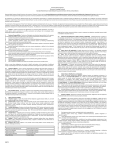
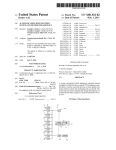


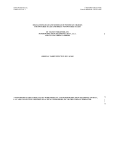
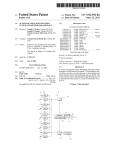

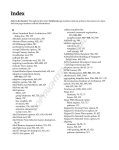
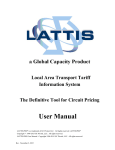
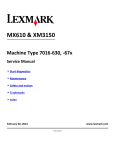
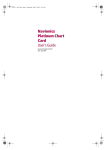
![Independence IDX 4000 IG User Manual [excerpts].](http://vs1.manualzilla.com/store/data/005651088_1-0e858df88d62387a8afea47c031c0cce-150x150.png)
